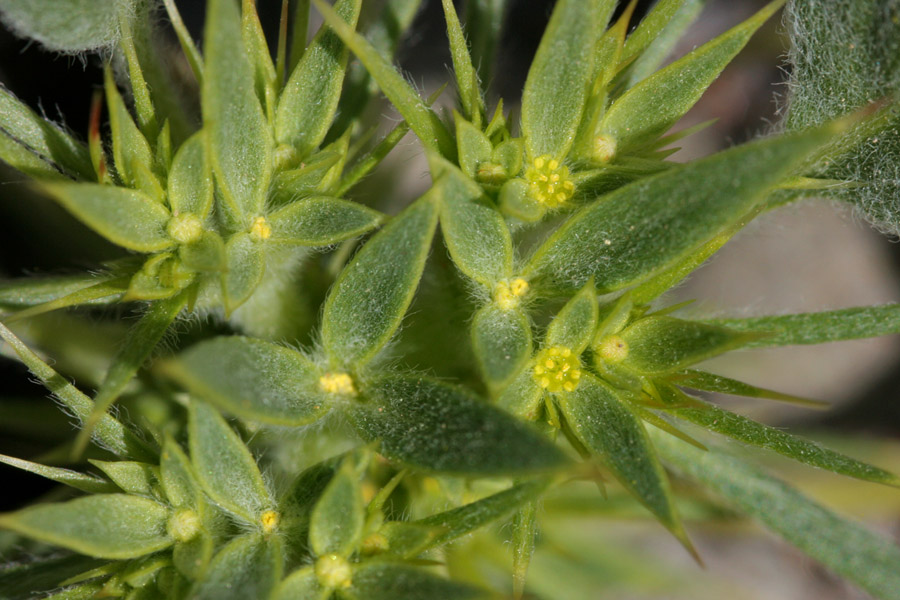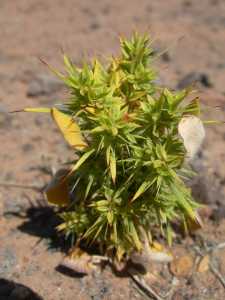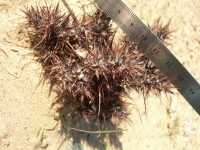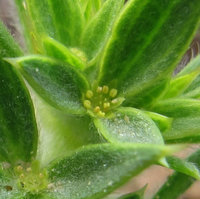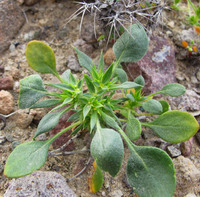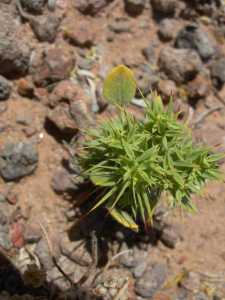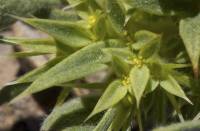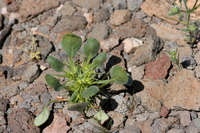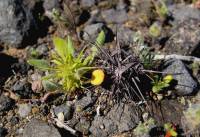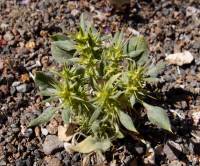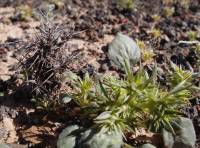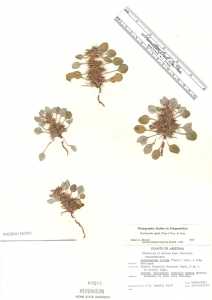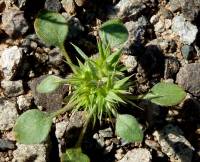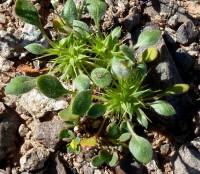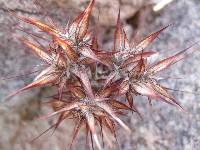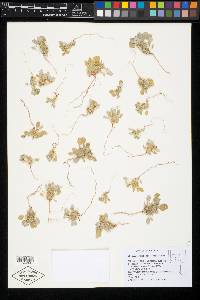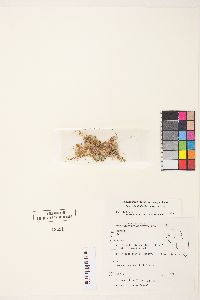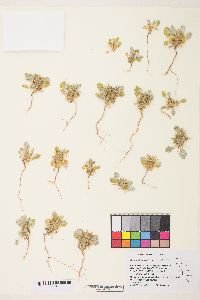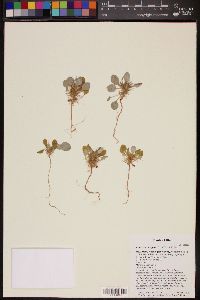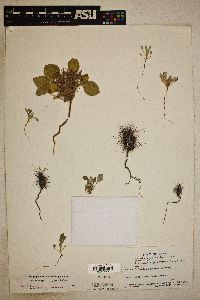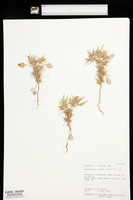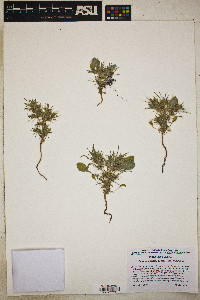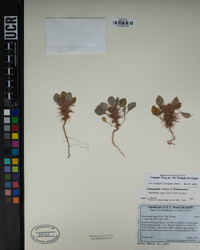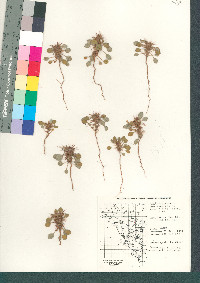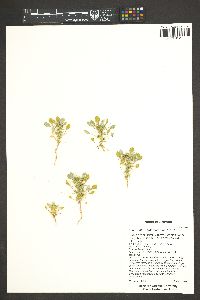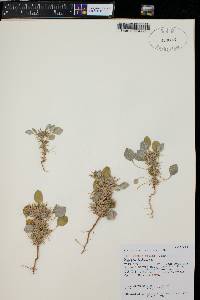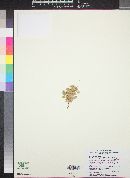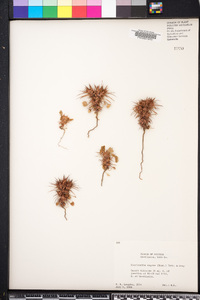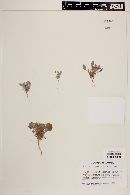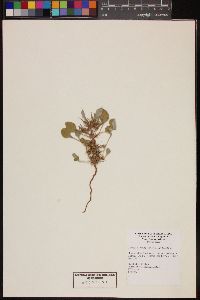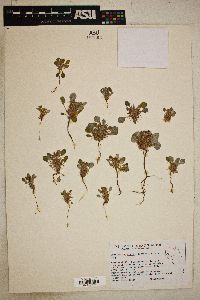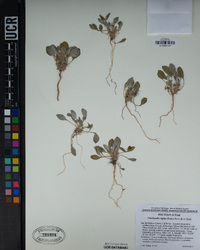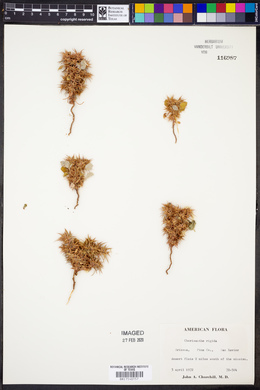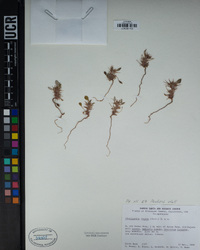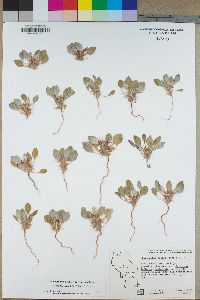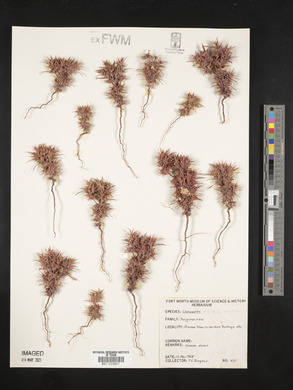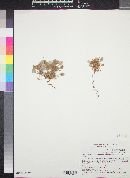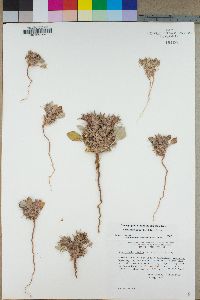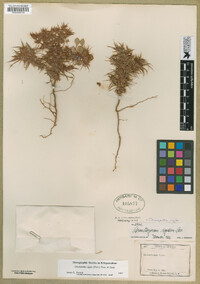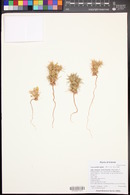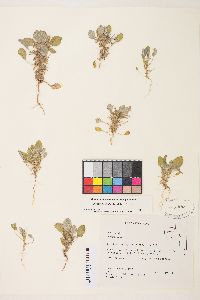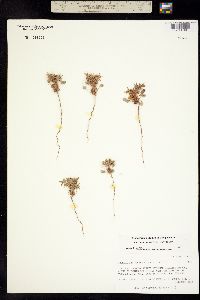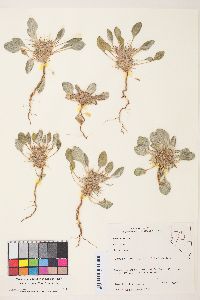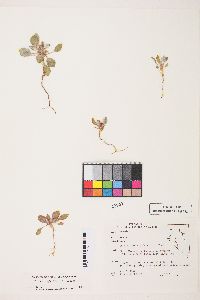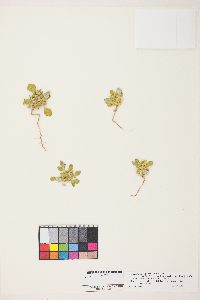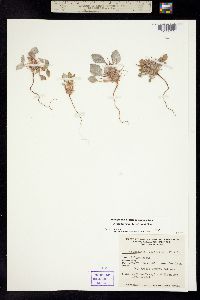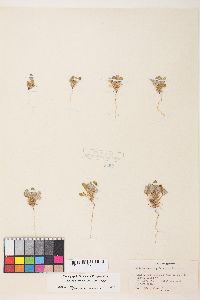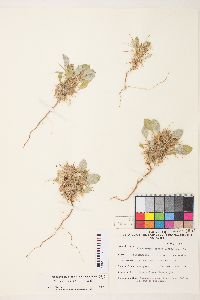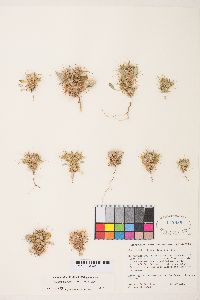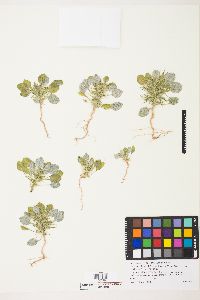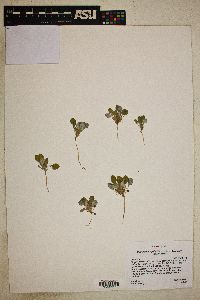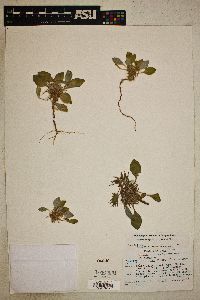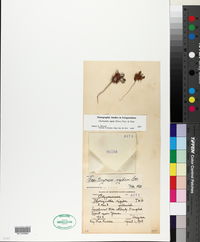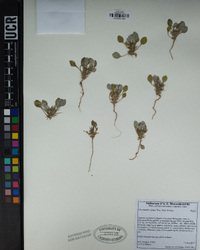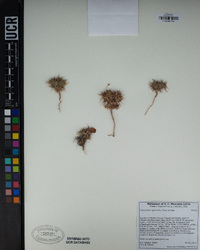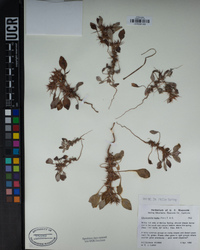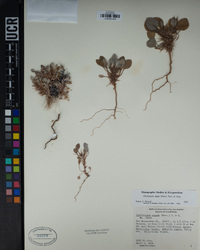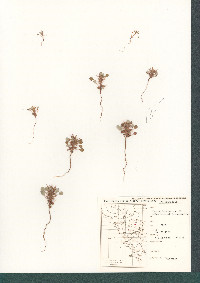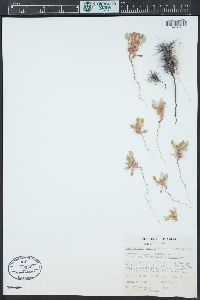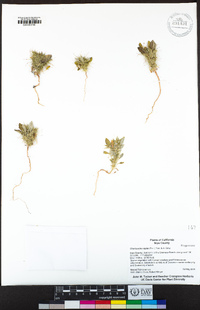
|
|
|
|
Family: Polygonaceae
Devil's Spineflower, more...rigid spineflower, spine herb, spiny chorizanthe, turkshead
[Acanthogonum rigidum Torr.] |
Plants erect, 0.2-0.8(-1.5) × 0.1-0.7(-1) dm, pubescent. Leaves basal and cauline; petiole 0.5-3(-4) cm; basal blade broadly elliptic to obovate, 0.5-2.5 × (0.3-)0.5-2 cm, thinly pubescent adaxially, more densely so to tomentose abaxially; proximal cauline leaf soon deciduous, 1, blade similar to basal leaf blades only 1-2(-2.5) × 0.5-1.5 cm, mucronate to awn-tipped, awn mostly 2-4 mm; distal cauline leaf blade persistent, 1 per node, sessile, blade linear to linear-lanceolate, 0.1-1.5 × 0.05-0.15 cm, becoming hard and thornlike with age. Inflorescences with involucres in dense clusters in axils of bracts, these on short shoots and each subtended by cauline leaves; bracts 2, subopposite to opposite, linear, 0.5-1(-1.2) cm × 1-2 mm, awns straight, 2-4 mm. Involucres 1, greenish, urceolate, 3-ribbed, 2-3 mm, corrugate, pubescent, rarely villous near base in some; teeth 3, unequal, with thickened anterior tooth toward base, 5-10 mm, sometimes expanding and becoming lanceolate to narrowly elliptic, others 0.5-1.2 mm; awns straight. Flowers 1-2, included to slightly exserted; perianth yellow, cylindric, 1.5-1.8 mm, densely pubescent abaxially; tepals connate ca. 2/ 3 their length, mono-morphic, oblong, rounded, entire apically; stamens 9, slightly exserted; filaments distinct, 0.5-1 mm, glabrous; anthers yellowish, ovate, 0.2-0.3 mm. Achenes brown, 3-gonous, (1.5-)1.8-2.2 mm. 2n = 38, 40. Flowering Feb-Jun. Sandy to gravelly or rocky flats and slopes, desert scrub; -60-1900 m.; Ariz., Calif., Nev., Utah; Mexico (Baja California, Sonora). Anyone with the misfortune to step bare-footed on Chorizanthe rigida after the plant has dried instantly appreciates its common name. The species is widespread on the Mojave and Sonoran deserts but only occasionally is it locally abundant or weedy. It is found also along the Lahontan Trough in western Nevada, a well-known biogeographic extension route north of the Mojave Desert (J. L. Reveal 1980). The exceedingly compact and dense inflorescences with suppressed secondary branches result in a series of leaves and bracts that subtend a closely arranged series of bracteated and involucrated flowers.
FNA 2005, Jepson 2012, Kearney and Peebles 1969 Duration: Annual Nativity: Native Lifeform: Forb/Herb General: Herbaceous annuals, to 15 cm tall, stems erect and dichotomously branching, herbage pubescent. Leaves: Opposite or in threes, basal broadly elliptic to obovate, or suborbicular, cauline linear to elliptic, 0.5-2.5 cm long and to 2 cm wide, cauline blades awned, hard and thorn-like in age, occasionally tomentose below, basal leaves commonly in a basal rosette but soon dissappearing, the stem leaves mostly bract-like. Flowers: Yellow to greenish, the spiny perianth 1.5-1.8 mm long, with 1-2 lobes with entire margins and densely hairy surfaces, stamens 9, fused to the top of the tube and slightly exserted, filaments glabrous, distinct, 0.5-1 mm long, anthers yellowish, ovate, 0.2-0.3 mm long, inflorescences subtended by 2 bracts with spiny tips 2-4 mm long as well as tubular or funnelform involucres 2-3 mm long, 3-angled and with 3 transversely ridged ribs as well as 3 teeth, the abaxial (lower) tooth 5-10 mm long, others 2-5 mm long, with spiny tips 0.5-2.5 mm long, infloresences borne in dense clusters in the axils of the bracts. Fruits: Elliptic, three-angeled achenes 1.5-2 mm long with brown or black, glabrous surfaces. Ecology: Found on sandy or gravely soils on slopes, flats, and in desert scrub communities, from 200-6,000 ft (61-1829 m); flowering February-June. Distribution: Arizona, California, Nevada, Utah; Mexico. Notes: This plant has spiny green or brown flowers borne erect from a loose mat of basal leaves. These hurt if you step on them in bare feet! Kearney and Peebles note this species persists as blackened plants on the desert floor long after they have died. Ethnobotany: Specific uses for this species are unknown, but other species in the genus have uses. Synonyms: Acanthogonum rigidum Editor: LCrumbacher2012 Etymology: Chorizanthe comes from the Greek chorizo, "to divide," and anthos, "flower," thus meaning "divided flowers," but actually referring to the divided calyx, and rigida means rigid, referring to the stiff leaves. |
|
|
|
This project was made possible in part by the Institute of Museum and Library Services [MG-70-19-0057-19].
Powered by Symbiota

